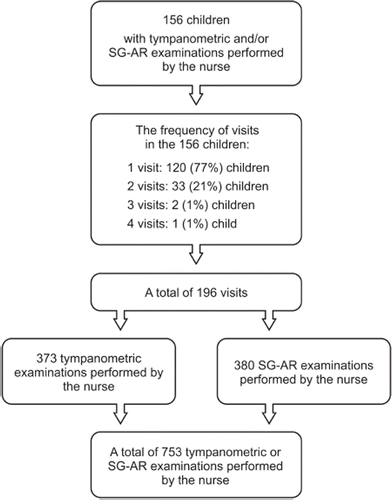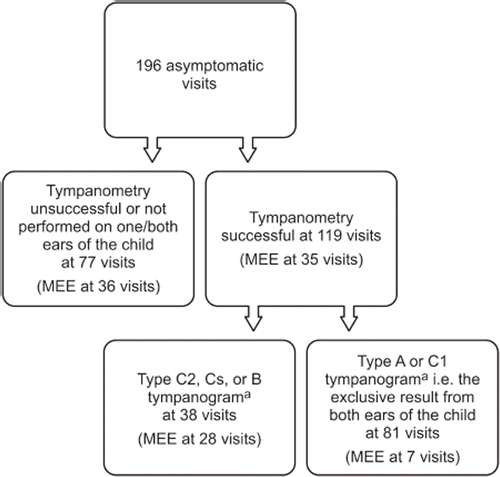Figures & data
Figure 1. Flow chart of the included children, visits, and tympanometric and spectral gradient acoustic reflectometry (SG-AR) examinations.

Table I. Successful tympanometric examinations (n = 272) performed by the nurses.
Table II. Exclusion of middle-ear effusion (MEE) by nurses.a
Table III. Successful spectral gradient acoustic reflectometry (SG-AR) examinations (n = 332) performed by the nurses.
Figure 2. Flow chart of the clinical usefulness of excluding middle-ear effusion (MEE) based on tympanometry performed by the nurses at asymptomatic visits (n = 196). Type A and C1 tympanograms from both ears of the child were regarded as the exclusive test result for MEE. Notes: aTympanogram types: Type A (tympanometric peak pressure greater than −100 daPa); type C1 (the pressure between −100 and −199 daPa); type C2 (the pressure −200 daPa or less); type Cs (width > 300 daPa or static acoustic admittance < 0.2 mmho); and type B (flat).

